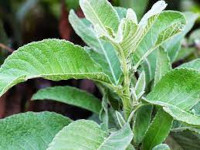Assessment of the Acute and Chronic Toxicity Studies of Ethanol Extract of <i>Blumea balsamifera</i> (L.) DC. Leaves on Murine Models
DOI:
https://doi.org/10.26538/tjnpr/v8i2.20Keywords:
oral dosing, safety assessment, mouse models, subchronic toxicity, Acute toxicityAbstract
Blumea balsamifera (L.) DC. (Asteraceae) has been a traditional therapeutic method for centuries, yet limited research has addressed its potential toxicity. This study aims to evaluate the in vivo toxicity of ethanol extract from Blumea balsamifera leaves (EEBB) through acute and sub-chronic toxicity tests in mice. In the acute test, single doses of EEBB (1000, 3000, and 5000 mg/kg) were orally administered and monitored for 14 days, extended to 42 days (satellite treatments). Sub-chronic toxicity involved EEBB doses (100, 300, and 5000 mg/kg) administered for 90 days, with further monitoring up to day 118 (satellite treatments). Results, EEBB contained various phytochemical compounds, including alkaloids, flavonoids, tannins, and terpenoids, etc. No clinical abnormalities were observed in both acute and sub-chronic toxicity experiments. However, a significant increase in body weight and weight gain was consistently noted in the experiments (p < 0.05), and food and water consumption were affected upon EEBB exposure (p < 0.05). After an extended observation period (42 and 118 days), alterations in hematological parameters (p > 0.05), biochemical evaluations (p > 0.05), urine composition (p > 0.05), relative organ weights (p > 0.05), and tissue structure in the heart, liver, and kidneys of satellite treatments with EEBB returned to normal. Despite initial observations of some transient adverse effects, the body appeared to adapt over time, resulting in no significant long-term changes (p < 0.05). These findings suggest the safety and potential benefits of the B. balsamifera leaf extract in mitigating potential adverse effects associated with its use.
References
Uddin MF, Das AK, Saha K. Antioxidant and cytotoxic activities of stem and root extracts of Catharanthus roseus cultivated in Bangladesh. Trop J Nat Prod Res. 2022; 6(9): 1455-1463.
Thomas A, Radhakrishnan EK. Acute and sub-acute oral toxicity studies of hydroalcoholic extract of Terminalia arjuna (Roxb.) bark in rodents. Trop J Nat Prod Res. 2023; 7(7): 3351-3359.
Jahromi SB, Pourshafie MR, Mirabzadeh E, Tavasoli A, Katiraee F, Mostafavi E, Abbasian S. Punica granatum peel extract toxicity in mice. Jundishapur J Nat Pharm Prod. 2015; 10(4): 23770.
Widhiantara IG, Jawi IM. Phytochemical composition and health properties of Sembung plant (Blumea balsamifera): A review. Vet World. 2021; 14(5): 1185-1196.
Pang Y, Wang D, Fan Z, Chen X, Yu F, Hu X, Wang K, Yuan L. Blumea balsamifera - A phytochemical and pharmacological review. Molecules. 2014; 19(7): 9453-9477.
Nhung TTP, Quoc LPT. Analgesic and antipyretic activities of ethanol extract of Gardenia jasminoides Ellis fruits in mice. Trop J Nat Prod Res. 2023; 7(10): 4902-4907.
Alison A. Basel declaration defends animal research. Nature. 2010; 468: 742.
Livestock Law in Vietnam, No. 32/2018/QH14. 2018, Hanoi, Vietnam.
Guidelines for preclinical and clinical trials of oriental medicines and herbal medicines (Decision 141/QD-K2ĐT). 2015. Ministry of Health, Hanoi, Vietnam.
Luyen LT, Quang NN. National Guideline on Ethics in Biomedical Research. Hanoi: Ministry of Health of Vietnam; 2013.179 p.
OECD. Guidelines for the Testing of Chemicals. Test No. 423: Acute oral toxicity-acute toxic class method. (OECD - Organisation for Economic Cooperation and Development); 2001.14 p.
Nhung TTP, Quoc LPT. Assessment of toxic effects of Hedyotis capitellata Wall. leaves ethanol extract via biological assays in mice (Mus musculus). Malays J Biochem Mol Biol. 2023; 26(1): 122-134.
OECD. Guidelines for the Testing of Chemicals. Test No. 408: Repeated dose 90-day oral toxicity study in rodents. (OECD - Organisation for Economic Cooperation and Development); 2018.16 p.
Clarkson JM, Martin JE, McKeegan DEF. A review of methods used to kill laboratory rodents: issues and opportunities. Lab Anim. 2022; 56(5): 419-436.
Dashti A, Shokrzadeh M, Karami M, Habibi E. Phytochemical identification, acute and subchronic oral toxicity assessments of hydroalcoholic extract of Acroptilon repens in BALB/c mice: A toxicological and mechanistic study. Heliyon. 2022; 8(2): 08940.
Saranraj P, Sivasakthi S, Deepa MS. Phytochemistry of pharmacologically important medicinal plants - A review. Int J Curr Res Chem Pharm Sci. 2016; 3(11): 56-66.
Bode AM, Dong Z. Toxic phytochemicals and their potential risks for human cancer. Cancer Prev Res. 2015; 8(1): 1-8.
Radaand SK, Kusuma A. Acute and sub-acute toxicity studies of starch hyaluronate in Wistar rats. Trop J Nat Prod Res. 2023; 7(5): 2965-2968.
Galgani J, Ravussin, E. Energy metabolism, fuel selection and body weight regulation. Int J Obes. 2008; 32(7): 109-119.
Francis G, Kerem Z, Makkar HPS, Becker K. The biological action of saponins in animal systems: A review. Br J Nutr. 2002; 88(6): 587-605.
MacLean DB, Luo LG. Increased ATP content/production in the hypothalamus may be a signal for energy-sensing of satiety: studies of the anorectic mechanism of a plant steroidal glycoside. Brain Res. 2004; 1020(1–2): 1-11.
Madrigal-Santillán E., Madrigal-Bujaidar E., Álvarez-González I., Sumaya-Martínez M.T., Gutiérrez-Salinas J., Bautista M., Morales-González A., González-Rubio M.G.L., Aguilar-Faisal J.L., Morales-González JA. Review of natural products with hepatoprotective effects. World J Gastroenterol. 2014; 20(40): 14787-14804.
Maalej A, Mahmoudi A, Bouallagui Z, Fki I, Marrekchi R, Sayadi S. Olive phenolic compounds attenuate deltamethrin-induced liver and kidney toxicity through regulating oxidative stress, inflammation and apoptosis. Food Chem Toxicol. 2017; 106: 455-465.
Yahfoufi N, Alsadi N, Jambi M, Mata C. The immunomodulatory and anti-inflammatory role of polyphenols. Nutrients. 2018; 10(11): 1618.
Wakim S, Grewal M. Human Biology. USA: LibreText; 2023. 678 p.
Li X, Zheng L, Zhang B, Deng ZY, Luo T. The structure basis of phytochemicals as metabolic signals for combating obesity. Front Nutr. 2022; 9: 913883.
Tran PNT, Tran TTN. Evaluation of acute and subchronic toxicity induced by the crude ethanol extract of Plukenetia volubilis Linneo leaves in swiss albino mice. BioMed Res Int. 2021; 2021: 6524658.
Hodges RE, Minich DM. Modulation of metabolic detoxification pathways using foods and food-derived components: a scientific review with clinical application. J Nutr Metab. 2015; 2015: 760689.

Published
How to Cite
Issue
Section
License
Copyright (c) 2024 Tropical Journal of Natural Product Research (TJNPR)

This work is licensed under a Creative Commons Attribution-NonCommercial-NoDerivatives 4.0 International License.


















